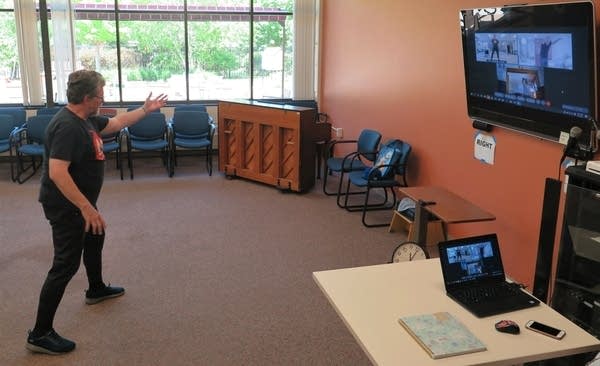Not Zoom weary? Older Minnesotans build on new tech savvy

David Stewart leads his Tai Chi class online at the Wilder Community Center for Aging in front of a camera on Tueday, June 1. Wilder has embraced using video conferencing as a way to reach older adults and to combat isolation.
Peter Cox
Go Deeper.
Create an account or log in to save stories.
Like this?
Thanks for liking this story! We have added it to a list of your favorite stories.


